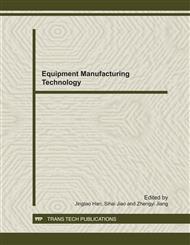p.117
p.122
p.127
p.131
p.139
p.146
p.150
p.158
p.167
Pd Nanocrystals-Embedded TiO2 Film Sandwiched Between Al2O3 Layers for Nonvolatile Memory Applications
Abstract:
Pd nanocrystals embedded in TiO2 film are formed in a self-assembly manner by rapid thermal annealing (RTA) of reactively co-sputtered TiPdO films. The cross-section transmission-electron microscopy (TEM) image and X-ray photoelectron spectra (XPS) reveal that the RTA at 800°C for 15 s results in the formation of Pd nanocrystals with an average size of around 10 nm. Further, the metal-oxide-semiconductor (MOS) capacitor with Pd-nanocrystals-embedded TiO2 film sandwiched between Al2O3 layers has been fabricated and characterized electrically in comparison with the counterpart without Pd nanocrystals, indicating that the formed Pd nanocrystals are dominant charge storage nodes. The fabricated MOS capacitor with Pd nanocrystals exhibits obvious memory characteristics, demonstrating a C-V hysteresis window of about 8.2 V at the sweeping voltage rang of +/-9 V, a flatband voltage shift of ~2V under a constant voltage stress of +9V for 10ns corresponding to a charge injection speed of 6×1012 cm-2μs-1. The underlying mechanisms of the memory characteristics under different C-V sweeps have also been discussed.
Info:
Periodical:
Pages:
139-145
Citation:
Online since:
December 2011
Authors:
Price:
Сopyright:
© 2012 Trans Tech Publications Ltd. All Rights Reserved
Share:
Citation:


